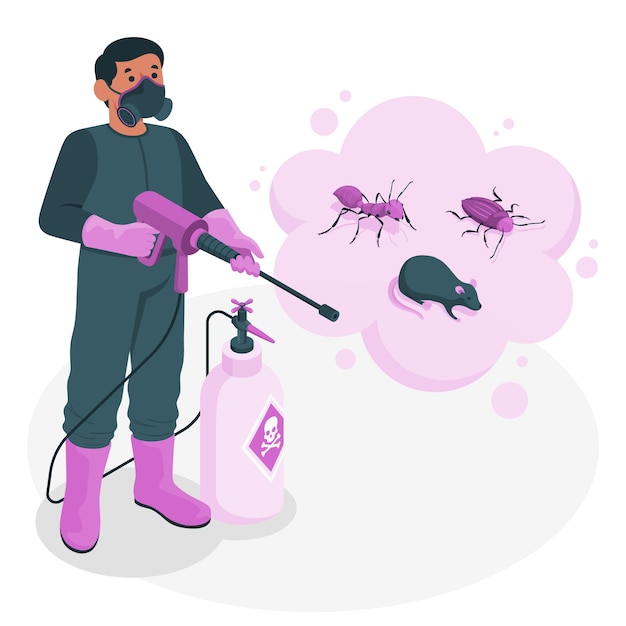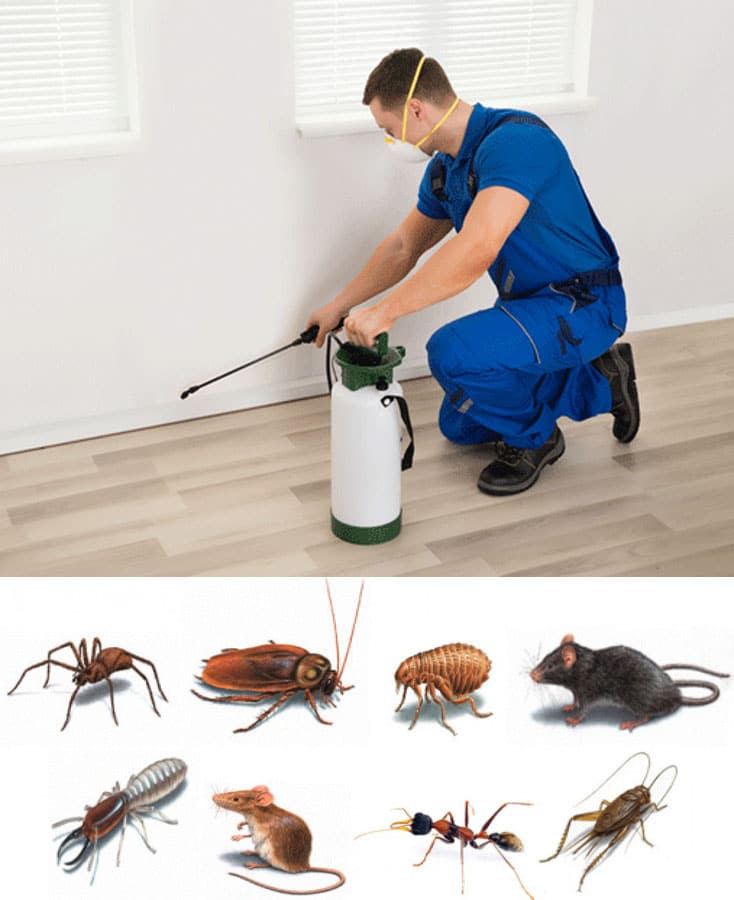Safe and Trustworthy Insect Control for Lasting Security
The importance of reputable and risk-free insect control can not be overemphasized, particularly in a period where environmental concerns are vital. Effective insect administration calls for a multifaceted approach that balances environmental honesty with the need for efficient bug suppression. By discovering eco-friendly options and incorporated pest management approaches, home owners can achieve long lasting security versus intrusive varieties while securing valuable ecosystems. The nuances of these methods may not be promptly clear, triggering a more detailed assessment of the practices that can lead to sustainable insect control end results. What steps can be required to ensure both safety and efficiency in pest administration?
Understanding Insect Control Techniques
Insect control includes a range of methods intended at managing and removing undesirable insects and rodents that can endanger both health and wellness and building. Comprehending these methods is essential for effective insect monitoring.
The key classifications of parasite control approaches consist of mechanical, organic, and chemical techniques. Mechanical techniques entail physical obstacles and traps to stop pest entrance and capture undesirable varieties. Utilizing displays on windows or utilizing sticky catches can dramatically reduce bug populations without presenting harmful substances - exterminator coquitlam.

Chemical pest control is typically the most recognized technique, utilizing pesticides to get rid of bugs. These chemicals can be effective yet should be utilized with caution to stay clear of damaging impacts on non-target species and the environment.
Advantages of Eco-Friendly Solutions
How can green services transform pest control methods? The adoption of eco-friendly pest control techniques provides numerous advantages, significantly improving the effectiveness and safety and security of insect administration.

An additional advantage is the positive effect on neighborhood biodiversity. Environment-friendly options are designed to target certain pests while protecting useful bugs and wildlife, promoting a balanced environment. This strategy lines up with the expanding customer demand for sustainable methods, boosting the track record of parasite control suppliers.
Integrated Pest Administration Techniques
The implementation of green options naturally causes the fostering of Integrated Insect Administration (IPM) approaches, which better enhance bug control efficacy. IPM is an all natural strategy that integrates numerous techniques to handle bug populations while minimizing environmental impact. This method stresses making use of organic, social, mechanical, and chemical controls, ensuring a well balanced and lasting method of parasite management.
One essential facet of IPM is the detailed analysis of insect task and ecological conditions. By checking parasite populations and identifying their life cycles, professionals can apply targeted interventions that disrupt the parasite's habitat or lifecycle, reducing dependence on chemical pesticides. Furthermore, cultural practices such as plant rotation and environment manipulation can considerably reduce parasite facility and recreation.
An additional vital component is using organic control agents, such as useful bugs or microbes, which can normally subdue bug populaces. When chemical applications are necessary, IPM focuses on the use of low-risk chemicals and uses them selectively, decreasing direct exposure to non-target organisms and human beings.
Integrating IPM methods not only enhances insect control performance but also advertises a more secure ecosystem, lining up with the growing demand for lasting methods in parasite administration.
Safe Practices for Home Owners
Recognizing the significance of safe practices in bug control can equip property owners to properly manage insect concerns while securing their health and the atmosphere. Executing preventive procedures and non-toxic techniques is essential in reducing exposure to hazardous chemicals.
House owners should initially examine their environment for conditions that draw in bugs, such as standing food, clutter, and water waste. On a regular look at here basis cleaning and securing entry factors can prevent insects from invading the home. Making use of all-natural deterrents, such as essential oils or diatomaceous planet, can supply efficient alternatives to chemical pesticides.
When chemical therapies are essential, home owners must opt for items that are particularly identified as risk-free for household usage. It is crucial to follow application guidelines thoroughly to stay clear of overexposure. In addition, using targeted therapies in locations where insects are recognized, instead of blanket splashing, can substantially reduce chemical usage.
Finally, keeping open communication with bug control professionals is crucial. House owners ought to ask about the safety and security of items utilized and request environmentally friendly choices whenever feasible. By taking on these safe methods, house owners can develop a healthier living atmosphere while effectively handling parasite concerns.

Tips for Long-Term Defense
Establishing a bug management method that stresses long-lasting security can greatly boost the performance of the secure methods previously reviewed. To accomplish this, home owners must apply regular examinations of their residential or commercial property, concentrating on concealed locations such as attic rooms, cellars, and crawl areas. Early detection of bug task is vital in avoiding problems from holding.
These techniques lower attractants that draw bugs right into the home. Securing access factors, such as cracks around home windows and doors, can successfully block prospective insect gain access to.
Landscaping should also be thought about; keeping plants cut and maintaining a distance between vegetation and the home reduces concealing spots for bugs. Utilizing natural deterrents, such as crucial oils or diatomaceous earth, can better inhibit invasions without considering severe chemicals.
Lastly, collaborating with a specialist insect control solution for regular assessments can provide an extra layer of safety. These experts can offer tailored suggestions and advanced treatments, making sure that your home remains protected versus pests in the lengthy term.
Conclusion
To conclude, secure and trustworthy pest control needs a complex strategy that emphasizes environmentally friendly approaches and integrated insect administration. By implementing natural deterrents, conducting regular evaluations, and keeping proper cleanliness, homeowner can dramatically minimize parasite populaces while protecting useful insects and the environment. Collaboration with professional pest control solutions improves the efficiency of these methods, making sure tailored remedies that provide lasting security and assurance against future infestations.
Effective bug monitoring calls for a multifaceted method that balances environmental stability with the demand for efficient parasite suppression. The fostering of eco-friendly bug control approaches provides many advantages, dramatically enhancing the efficiency and safety and security of bug administration.The implementation of environmentally friendly options normally leads to the fostering of Integrated Bug Administration (IPM) approaches, which additionally improve bug control effectiveness. exterminator coquitlam. By keeping you could try this out an eye on insect populations and identifying their life cycles, professionals can apply targeted interventions that interrupt the pest's habitat or lifecycle, reducing dependence on chemical read review pesticides.In conclusion, secure and trusted pest control needs a multifaceted technique that emphasizes environment-friendly methods and incorporated pest administration